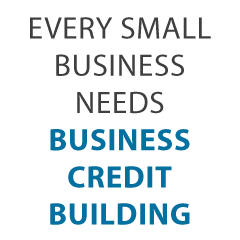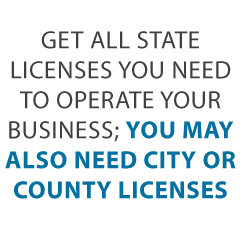
How Business Venture Capital Sparks Innovation, And How Google and Facebook are Throwing Water on the Fire When it Comes to Online Ad Firms
Top Ways to Get Business Venture Capital and Keep Innovation Alive
Innovation is what keeps things moving. It keeps industries from growing stagnant and encourages our economy to continue thriving. In hard economic times, innovation is what pulls us out. Consequently, we need innovation to keep moving along. Finding new and better ways to get things done is essential to our economy and our livelihood. It cannot happen without business venture capital however.
If innovation is the fire that raises the hot air balloon of the economy, then business venture capital is the spark that lights the fire. Of course you can always get corporate credit, and that is important. However, there must be people with funds that are willing to support the innovation for it to do what it needs to do. Name most any industry, and if innovation stops the industry will stall. As a result, growth will cease.
Consequently, online ad firms are starting to see this in their industry. It seems strange that, with the internet not going anywhere and continuing to grow, anything online should be in danger of stalling. In the face of Goliath’s like Facebook and Google however, it appears that is exactly what is happening.
What is Venture Capital Funding?
It isn’t really hard to define venture capital. At its core, it is an investment. Generally, these investment funds come from venture capital firms. These venture capital funds are used by the business owner to get the business up and running, and then the venture capital firm earns a percentage of the profit.
How Does Business Venture Capital Spark Innovation?
What does business venture capital have to do with innovation, or what does a lack business venture capital have to do with a lack of innovation? Consider the previously mentioned ad tech firm example. For a few years there was a ton of venture capital flowing into this particular industry, but there has been a steep decline in more recent years. What is happening with venture capital firms?
Discover our business credit and finance guide, jam-packed with new ways to finance your business without emptying your wallet.
For example, there were 260 deals between ad tech companies and venture capital firms in 2014. In 2017 there were only 122. The decline is ongoing. Many of the smaller ad techs were not profitable, so they are consolidating or disappearing all together. Without the business venture capital helping them out, there will not be many more making a go at it either.
The problem is, those smaller companies are needed when it comes to innovation. If there is no one trying to beat Google and Facebook, or at least compete, then there is no one trying to find a better way to do things. With no venture capital flowing into the industry, the smaller companies aren’t going to be able to innovate, meaning they can’t compete.
What’s the Solution?
In the ad tech world, the best solution is likely a third large competitor. A third player in the big game could up the competition just enough to inspire the big three to start looking for ways to beat each other at their own game. Competition is where innovation thrives.
What about other industries? It’s kind of a two-way street. Venture capitalists like to see innovation, and startups need to find innovative ways to do what they do so that they can compete. To do that, they need funding. In this way, innovation attracts business venture capital, and the more venture capital a business can get its hands on, the more innovative it can be.
How Does this Affect You and Your Business?
You know you have to play hard or go home. If you aren’t innovating, then you aren’t going to get the funds. If you aren’t getting the funds, your innovation will never become a reality. So, first thing’s first. Get those creative juices flowing and find a better way to do what you do than your competitors.
How to Get Venture Capital
Now that you understand how venture capital and innovation are related through the ad tech vs. Google and Facebook example, you need to know how to get venture capital for your own business. Keeping with the theme of sparks and fire, you will need to spark your own fire, a campfire of sorts, to attract potential investors. Here is how to get the fire started, and what to do once you have them sitting around said fire.
Gather Your Firewood: Research
Don’t just pick a random firm to approach about investing in your business. You have to do a little research first. Venture capitalists do not make a habit of investing in companies that haven’t proven themselves. Most want to see some proof of profitability.
Look for those that have historically offered funding to companies in the same industry as you that were in a similar stage. If they typically go for businesses in health care and you are a tech company, they are probably not the right fit for you.
Similarly, if they generally lend to those that have been in business for a minimum of 2 years and profit of at least $50,000 a year, and you fit that description, they may be worth talking to. Be intentional with the firms you approach to cut down on wasted time and effort.
Keep the Fire Contained
Do not blast every venture capitalist you can find on line with a cookie cutter email. That is a huge no no. Not only will it not work, but they likely will never even read your email. Back in the 80s there was an idea that venture capitalists would read unsolicited proposals, and they pretended that they did. There is no pretending now. It doesn’t happen, and there is no reason to think it does. Email blasting is not a way to find investors. Keep your search concentrated and contained to those that are interested in your industry and companies in the same stage as yours.
Kindling: Work Through Your Network for the First Spark
How do you find someone then? In addition to concentrated research, work through your network. Talk to friends, families, and associates. Pick their brains to see who they know that may be a good fit for your business. Ask them to introduce you.
Don’t have a network? Better get to work! Starting from scratch to build a business network is hard, but it isn’t impossible. Start by joining the local chamber of commerce. Next, take a look at any other professional organizations that may be a good fit for your business.
Then, attend events. Take business cards, go mingle, and make connections. Events may include business after hours, lunch and learns, conferences, and workshops. All of these offer excellent opportunities for network building, and you may even learn something along the way.
Make it Inviting
If you are building a campfire, a few well-placed chairs or benches can make others want to join. In the same way, a quick video or memo that will catch the attention of investors. This is what you use when you get that introduction from friends, family, or someone else in your network. It needs to be quick and to the point, just enough to make them want to know more.
Snacks: The One Liner
A spectacular one-liner never hurts. This can be on your business cards, all over your social media, and anywhere else it may be appropriate to include it. It should get across what you do in one look. Use familiarity and popularity to help with this. For example, one toy company touts itself as “The Netflix of Toys.” There is no doubt what the business does, due to the fact that everyone knows what Netflix is, and of course, what toys are.
Sing Campfire Songs: Develop a Relationship
If your one liner and memo or video work, you will be in further contact. Spend some time developing a relationship. Don’t rush them. Let them get to know you and your business. Business venture capital is not a form of quick funding. It takes time to build trust.
What Does This Look Like Practically?
Okay, so say you are at an event and someone you already know introduces you to a potential investor. You visit a little and hand them your business card. Maybe there is a one-liner on it that really catches their eye. They may ask you a few questions and you answer, then as you part ways he or she says “Very interesting. I’d love to know more sometime.”
The next business day, when you get to work, send a quick email. It should say something like “It was a pleasure to meet you at (insert event here.) You mentioned you would like to know more about our company. I have attached some information.” Then attach your memo or video.
If they reply, you can work from there building the relationship.
When to Pitch
This is a big question. They may ask for a pitch as soon as they see your one liner. They may ask for it after they are wowed by your memo or video. It is more than a little likely they will want to develop some kind of a relationship before they decide they want to hear a whole pitch deck.
Here’s the thing. Regardless of when they want it, you need to have it ready before they ask.
What Should Be in a Pitch Deck for Business Venture Capital?
A pitch deck is a power point presentation that serves up detailed information about your venture on a series of slides. Following are some tips as to what slides you should include and what should be on them, as well as a few dress-ups that will really fan the flames.
-
Company Overview
This can be just a quick, four or five bullet point slide that gives a summary of the rest of the pitch. Consider it a sample designed to make them want to know more.
Discover our business credit and finance guide, jam-packed with new ways to finance your business without emptying your wallet.
-
Vision or Mission Statement
Create a clear vision and purpose for your company and sum it up in one statement.
-
Your People
Introduce your team. Use pictures. They need to put a face with the people they are investing in.
-
The Need for a Business Like Yours
Present the “problem” that your business will solve. Show the need your product or service will fill.
-
How Your Business Will Solve the Problem
Make the case for why your business is the ultimate “solution” to the problem previously mentioned. Spend some time explaining how it will work and what makes your business different from other solutions, if there are others.
-
Introduce Your Product or Service
Introduce the product or service you will be selling. Bring a prototype or drawings of the product, or if it is a service bring testimonies from those who have used it.
-
Is There a Market for It?
This is where you define your market. Who is going to use your product or service, how they will benefit from it, and what they can and will pay. This is also where you explain exactly how you will reach your market.
-
Who is Already Buying?
If you already have a customer base, like people already buying what you are selling, let potential investors know that in this section. Try using logos investors may recognize where possible. They make a more lasting impression.
-
Technology
If you have some proprietary technology, be sure to include that. Include any patents or copyrights.
-
Do Not Ignore Competition
You can’t write a pitch deck and ignore the competition. Acknowledge them and lay out your plans for beating them. Note who they are, how you are different, and what gives you the advantage over them.
Also, make sure you research the competition. You will need to be able to answer questions knowledgeably.
-
Traction
This many include things such as web traffic, downloads of any apps you already have available, early sales, partnerships, and testimonials.
-
Tell Them Your Business Model
Tell them how the business will make money, how a customer will retain value long-term, or not, and what you pricing plan looks like.
-
How Will You Get the Word Out?
Explain your marketing plan. Those considering providing you with business venture capital will want to know which marketing platforms and channels you intend to use and what the marketing campaign will look like.
-
Financial Statements
It boils down to more than just an income statement and a balance sheet. They need to know what you have, how much you are making, and how you intend to use what they give you.
-
The Ask
Tell them exactly what you want from them. Lay out the amount along with what they will get in return.
A Few More Tips to Ensure you Land the Business Venture Capital You Need
There is more to a pitch deck than content. That’s the important part, but if they fall asleep it won’t do you any good. They cannot absorb what you are telling them if they are bored to tears. You need to make it pop.
Make it Look Good.
A mixture of crisp, clean design and eye-catching fonts won’t win it for you. Certainly a lack thereof probably means they won’t make it far enough to even see the important stuff. In fact, while content is crucial, design is just as necessary for the content to ever get through. It should be interesting, but not cluttered.
Don’t Make It Hard.
Don’t use DropBox or something similar. Stay away from crazy file formats. Rather, attach the pitch deck directly to an email. Just make it easy.
Don’t Get Long Winded.
A good pitch deck shouldn’t be more than 15 or 20 slides. It seems like after that, most start to lose interest.
Keep Acronyms to a Minimum
It’s too easy to misunderstand what you are talking about. As a result, it is better to just say it the long way.
Discover our business credit and finance guide, jam-packed with new ways to finance your business without emptying your wallet.
What Can We Learn from Facebook, Google, and the Ad Tech Industry? We Need Innovation, and we Need Business Venture Capital to Start the Fire
It is no secret venture capital in the ad tech industry is declining. It is because giants like Facebook and Google are snuffing the fire. The verdict is still out on how this will affect the industry in the long-term, but it isn’t hard to envision how it is likely to play out if something doesn’t change.
Business venture capital sparks innovation, and a lack of it can for sure stifle it. Understanding that through the phenomenon that is happening in the ad tech world right now is vital. Above all, keep innovation alive in your industry by going after the venture capital you need to start and grow your business to its full potential.
The post How Business Venture Capital Sparks Innovation, And How Google and Facebook are Throwing Water on the Fire When it Comes to Online Ad Firms appeared first on Credit Suite.











